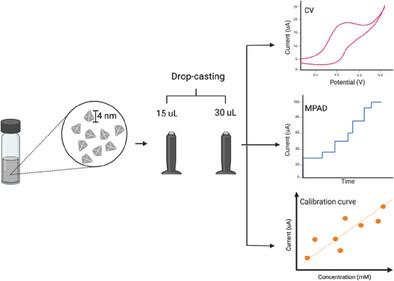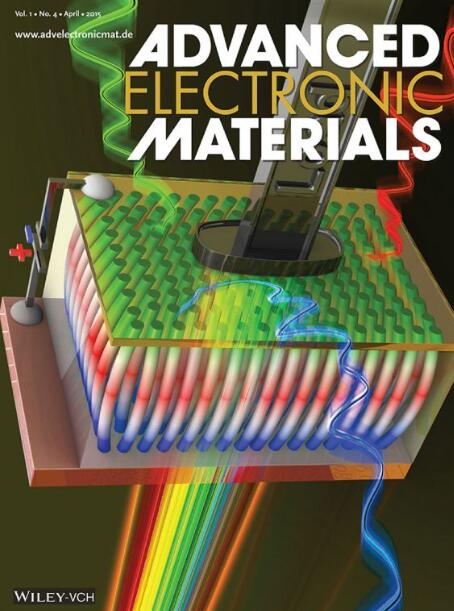Electrochemical Determination of Gallic Acid in Tea Samples Using Pyramidal Pt Nanoparticles
IF 5.3
2区 材料科学
Q2 MATERIALS SCIENCE, MULTIDISCIPLINARY
引用次数: 0
Abstract
Gallic acid (GA) is a natural phenolic compound with significant biological properties, including anti-inflammatory, antioxidant, and anticancer effects. Detecting GA in biological matrices like food and beverages is essential but challenging due to the multitude of GA-like molecules with similar proprieties and functional moieties. In this study, ultra-small (≈4 nm) pyramidal platinum nanoparticles (PtNPs) with a high fraction of {111} surface domains are used to design a new electrochemical sensor for GA detection in tea, which is the most popular manufactured drink consumed in the world. PtNPs are deposited on a glassy carbon electrode (GCE) using a simple drop deposition method, requiring a minimal amount of nanoparticles and, hence, metal precursor. With just 2.7 µg of PtNPs, the sensor demonstrated a linear response in the concentration range from 50 to 600 µm, a detection limit of 16 µm, and a quantification limit of 49 µm. The sensor selectivity is tested against other antioxidant compounds commonly present in tea, consistently showing a higher response for GA. Furthermore, the sensor capability to detect GA in real green and black tea samples is further validated by high-performance liquid chromatography (HPLC) analysis, with high correlation between chromatographic data and sensor response.

锥体Pt纳米粒子电化学测定茶叶样品中的没食子酸
没食子酸(GA)是一种天然酚类化合物,具有重要的生物特性,包括抗炎、抗氧化和抗癌作用。检测食品和饮料等生物基质中的GA是必不可少的,但由于具有相似性质和功能部分的大量GA样分子,因此具有挑战性。在本研究中,利用具有高{111}表面结构域的超小(≈4 nm)金字塔形铂纳米粒子(PtNPs)设计了一种新的电化学传感器,用于茶中GA的检测,茶是世界上最受欢迎的饮料。PtNPs采用简单的滴沉积方法沉积在玻碳电极(GCE)上,所需的纳米颗粒和金属前驱体数量最少。仅使用2.7 μ g的PtNPs,传感器在50至600 μ m的浓度范围内表现出线性响应,检测限为16 μ m,定量限为49 μ m。对茶叶中常见的其他抗氧化化合物进行了传感器选择性测试,一致显示出对GA的更高响应。此外,通过高效液相色谱(HPLC)分析进一步验证了传感器在真实绿茶和红茶样品中检测GA的能力,色谱数据与传感器响应之间具有高度相关性。
本文章由计算机程序翻译,如有差异,请以英文原文为准。
求助全文
约1分钟内获得全文
求助全文
来源期刊

Advanced Electronic Materials
NANOSCIENCE & NANOTECHNOLOGYMATERIALS SCIE-MATERIALS SCIENCE, MULTIDISCIPLINARY
CiteScore
11.00
自引率
3.20%
发文量
433
期刊介绍:
Advanced Electronic Materials is an interdisciplinary forum for peer-reviewed, high-quality, high-impact research in the fields of materials science, physics, and engineering of electronic and magnetic materials. It includes research on physics and physical properties of electronic and magnetic materials, spintronics, electronics, device physics and engineering, micro- and nano-electromechanical systems, and organic electronics, in addition to fundamental research.
 求助内容:
求助内容: 应助结果提醒方式:
应助结果提醒方式:


